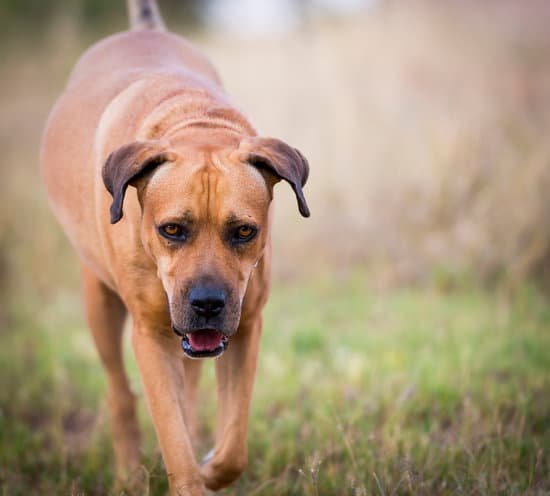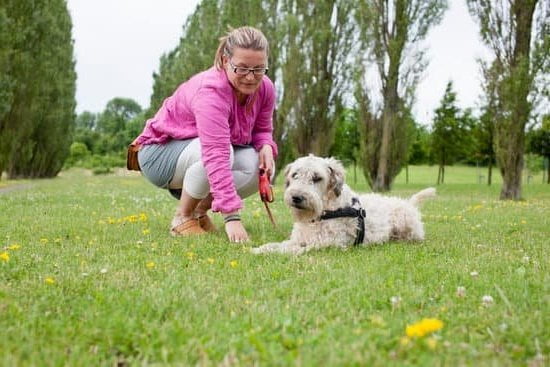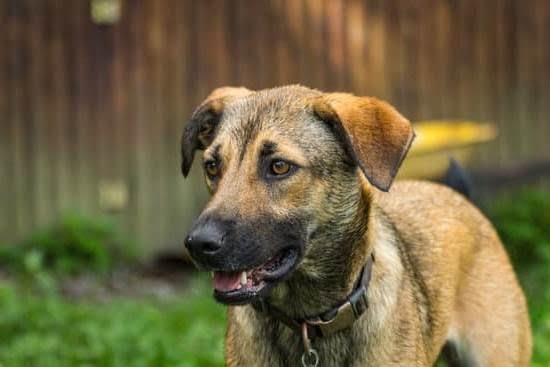House training a dog with a crate is a very effective way to train your dog to go potty outside. Dogs do not like to soil their sleeping area, so by using a crate you can train your dog to only go potty outside.
To house train a dog with a crate, you will first need to purchase a crate that is the appropriate size for your dog. The crate should be big enough for your dog to stand up, turn around, and lay down in.
Next, you will need to begin training your dog to use the crate. Start by placing your dog in the crate and giving them a treat. Once your dog is comfortable going into the crate, you can start closing the door for short periods of time. gradually increase the amount of time your dog spends in the crate.
When you are not able to directly supervise your dog, they should be crated. This will help to prevent your dog from pottying in the house.
If your dog has an accident in the house, do not punish them. Simply clean it up and continue to crate your dog. Punishing your dog for pottying in the house will only make them more reluctant to use the bathroom in the crate.
House Dog Training
House dog training is important for establishing rules and limits for your dog in the home. Dogs that are not properly trained may exhibit behavior problems such as jumping on people, chewing on furniture, or barking excessively. There are a number of basic house dog training commands that you can teach your dog to help keep them under control.
The first command that you should teach your dog is “sit.” This command can be used to calm a dog down or to stop them from jumping on people. To teach your dog to sit, hold a treat in front of their nose and slowly move it up over their head. As the dog follows the treat with their nose, they will naturally sit down. Once they are sitting, say “sit” and give them the treat.
The next command that you should teach your dog is “stay.” This command can be used to keep your dog from running out the door or jumping off the couch. To teach your dog to stay, tell them to “stay” and hold out your hand. If the dog stays in place, say “good stay” and give them a treat. If the dog gets up, tell them to “stay” again and try again.
The final command that you should teach your dog is “come.” This command can be used to get your dog to come to you when you call them. To teach your dog to come, say “come” and give them a treat. As your dog gets better at coming when called, you can start calling them from further away.
Why Is My House Trained Dog Peeing In The House
?
There could be a number of reasons why your house-trained dog is peeing in the house, but the most common one is that they are not getting enough exercise. Dogs need regular exercise in order to help them relieve themselves properly. If your dog is cooped up inside all day and only gets a few minutes of exercise at a time, they may start to pee in the house because they don’t have an opportunity to relieve themselves outdoors.
Another possibility is that your dog is not getting enough water. Dogs need plenty of water in order to help them stay hydrated and avoid urinating in the house. Make sure your dog has a fresh bowl of water available at all times and that you are taking them for walks or playing with them in the yard regularly so they can get some exercise and relieve themselves.
If you’ve ruled out both of these possibilities and your dog is still peeing in the house, it may be time to take them to the vet to rule out any medical problems. There could be a physical issue causing them to have trouble controlling their bladder, or they may be experiencing some sort of anxiety or stress that is making them want to pee indoors. Whatever the case may be, it’s important to get to the bottom of the problem and find a solution so your dog can start peeing in the proper place again.
How To House Train A Dog With Bells
One of the most popular methods of house training a dog is to use bells. This is a great method for housetraining puppies and adult dogs. When you use bells to house train a dog, you are teaching them to ring a bell to let you know they need to go outside to potty.
There are a few things you will need to get started with this method. You will need a bell or set of bells, a collar for your dog, and a leash. The bell or bells should be something your dog can easily reach with their nose. You can find bells at most pet stores.
The first step is to put the bell or bells on your dog’s collar. You will want to make sure the bell is close to your dog’s nose so they can easily reach it.
The next step is to start training your dog to ring the bell. You will want to take your dog outside every time they ring the bell. As your dog begins to associate ringing the bell with going outside to potty, they will start ringing the bell on their own.
It may take a little time, but eventually your dog will learn to ring the bell every time they need to go outside to potty. This will help to keep your home clean and free of accidents.
House Trained Dog Now Peeing In House
There can be a variety of reasons why a house-trained dog is suddenly peeing in the house. One possibility is that the dog is feeling anxious or stressed about something and is using the bathroom as a way to relieve that anxiety. If there has been a recent change in the family’s routine or if there is a new pet or person in the home, that could be causing the dog to feel insecure and act out in this way. Another possibility is that the dog may be experiencing a health problem that is causing him to have difficulty holding his urine. If the dog is drinking more water than usual, seems to be in pain when he urinates, or is urinating more often than usual, it is important to take him to the veterinarian for a check-up. Finally, if the dog has been successfully house-trained for a long time and has suddenly started having accidents, it is possible that he is simply getting old and is no longer able to control his bladder. In this case, it is important to make sure that the dog has plenty of access to water and that he is able to go outside to relieve himself as often as necessary.

Welcome to the blog! I am a professional dog trainer and have been working with dogs for many years. In this blog, I will be discussing various topics related to dog training, including tips, tricks, and advice. I hope you find this information helpful and informative. Thanks for reading!





